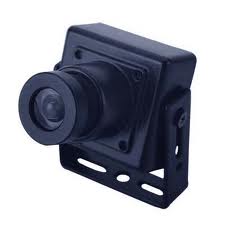CCD TECHNOLOGY
WHAT IS CCD??
A charge coupled device (CCD) camera is an apparatus which is designed to convert optical brightness into electrical amplitude signals using a plurality of CCDs, and then reproduce the image of a subject using the electric signals without time restriction. Charge coupled devices or CCDs are arrays of semiconductor gates formed on a substrate of an integrated circuit or chip. The gates of the CCD are operative to individually collect, store and transfer charge. When used in image applications, the charge collected and stored in each gate of the array represents a picture element or pixel of an image. The CCD image sensor includes an image sensing section, which performs photoelectric conversion, and a storage section, which is arranged separate from the image sensing section and temporarily stores charges acquired by the photoelectric conversion. A CCD camera includes a CCD imager IC (integrated circuit) and control circuits typically mounted on a printed wiring assembly.
In CCD cameras , either a CCD matrix or one or more CCD lines is/are located in the focal plane behind the optical system. A CCD is normally used for the image pickup device of a digital camera. Image data captured by it is stored in a storage medium such as a compact flash memory or an IC memory card. To monitor the captured image, a display means such as an LCD (liquid crystal display) is generally equipped in the digital still camera. Charge coupled device (CCD) camera systems are configured to capture signals according to many different CCD output formats and pixel configurations.
Important points about CCD Camera:
- A CCD transports the charge across the chip and reads it at one corner of the array. An analog-to-digital converter (ADC) then turns each pixel’s value into a digital value by measuring the amount of charge at each photosite and converting that measurement to binary form.
- CCD sensors create high-quality, low-noise images. CMOS sensors are generally more susceptible to noise.
- CCD sensors have been mass produced for a longer period of time, so they are more mature. They tend to have higher quality pixels, and more of them.
- CCDs consume as much as 100 times more power than an equivalent CMOS sensor.
To get more details about the CCD in relation with Fingerprint and Access Control visit the below mentioned link:
http://iwatchsystems.com/technical/2011/06/01/finger-print-and-access-control/








September 24th, 2010 at
[…] This post was mentioned on Twitter by iWatchSystems LLC, Ron Gibson. Ron Gibson said: CCD TECHNOLOGY http://dlvr.it/5nldL […]
October 1st, 2010 at
[…] CCD TECHNOLOGY | Technical […]
October 1st, 2010 at
[…] CCD TECHNOLOGY | Technical […]
October 4th, 2010 at
[…] CCD TECHNOLOGY | Technical […]
October 18th, 2010 at
[…] CCD TECHNOLOGY […]
October 23rd, 2010 at
[…] CCD TECHNOLOGY | Technical […]